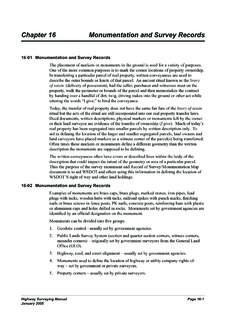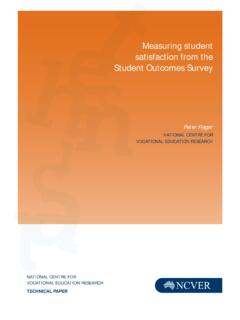Transcription of How Healthcare Providers Meet Patient Language Needs
1 HOW Healthcare Providers MEET Patient Language NEEDSHIGHLIGHTS OF AMEDSCAPE PROVIDER SURVEYS eptember 2017i Table of Contents Introduction .. 1 Methods .. 2 Results .. 3 survey Respondents .. 3 Strategies Used .. 4 Trained interpreters on site .. 6 Bilingual staff serving as interpreters .. 7 Use of telephonic interpretation services .. 7 Ask family members to interpret .. 8 Patient materials are printed in languages other than English .. 8 No strategy to address Language barriers or I don t know .. 8 Language Access Plans and Training .. 8 Have a formal plan for providing Language services .. 9 Do not have a formal plan for providing Language services .. 10 Do not know whether organization has a formal plan for providing services .. 10 Organization does not provide staff training on its Language service plan .. 12 Do not know whether organization provides staff training on its Language service plan.
2 13 Limitations .. 13 Conclusion .. 14 Appendix A .. 15 Appendix B .. 17 Appendix C .. 19 Appendix D .. 21 ii List of Tables Table 1. Strategies Used to Assess or Plan to Meet Patient Needs .. 5 Table 2. Number of Strategies Selected for Meeting Patient Needs .. 5 Table 3. Strategies Used to Meet Language Needs .. 6 Table 4. Strategies Used to Meet Language Needs in Different Settings .. 6 Table 5. Strategies Nurses and Physicians Use to Meet Language Needs .. 7 Table 6. Nurse and Physician Reporting of Formal Plans for Language Services .. 9 Table 7. Reporting of Formal Plans Among Those Using Family Members to Interpret .. 10 Table 8. Formal Language Plans and Provider Estimates of Percent of Patients with Limited English Proficiency .. 10 Table 9. Training on Language Service Plans Reported by Nurses and Physicians.
3 12 Table 10. Training on Language Service Plans in Selected Settings .. 12 Table 11. Training Among Those Using Family Members to Interpret .. 12 List of Exhibits Figure 1. Respondents by Practice Setting .. 3 Figure 2. Provider Estimates of Percent of Patients with Limited English Proficiency .. 4 Figure 3. Formal Plan for Providing Language Services .. 9 Figure 4. Training About Language Plans .. 11 1 Introduction Key Findings: One third of respondents askedpatients about Language Needs atintake and 10% track patientlanguage preferences in medicalrecords. Telephonic interpretation serviceswere commonly used to meet patientlanguage Needs . Close to 40% of respondents,reported that asking family membersto interpret is one of the strategiesthey used to address Language strategy was particularly popularamong those working in source: August 2013 Medscape provider survey Language and communication barriers such as those resulting from limited English proficiency can contribute to misunderstandings between patients and Providers , obstacles to high quality of care, and negative clinical outcomes.
4 Throughout the United States as a whole, approximately 8% of the population ages 5 and older are individuals with limited English proficiency, and of the more than 52 million Medicare beneficiaries in the United States, approximately 8% demonstrate limited English proficiency. Many of these individuals may need or want Language assistance services, such as an interpreter, to communicate effectively with their Providers . There are many different approaches to identifying whether an individual Needs Language assistance and how to provide that assistance, but some approaches may be less ideal than others. For instance, evidence shows that relying on unqualified interpreters, such as family members, can increase the chance of misunderstanding, unnecessary complications, and in some cases, disability or even Understanding the different approaches being used by Providers to identify Language Needs and provide Language assistance can help identify where best practices are and are not being used.
5 The extent of need for Language assistance services can also vary significantly across different parts of the country, and local level Needs may not match state level These differences highlight the importance of understanding what Providers are doing to meet the Language assistance Needs of their patients with limited English proficiency. To identify ways to increase the provision of culturally and linguistically appropriate services, the Centers for Medicare & Medicaid Services Office of Minority Health (CMS OMH) sought to better understand how Providers identify and meet the Language assistance Needs of their patients. This report summarizes the results of an online Medscape survey fielded in August 2013 that included questions about languages spoken by patients, strategies used to identify Patient Needs , and the use of Language services to meet these Needs .
6 The survey was 1 Flores G, Abreu M, Barone CP, Bachur R, Lin H. Errors of medical interpretation and their potential clinical consequences: a comparison of professional versus ad hoc versus no interpreters. Ann Emerg Med. 2012 DOI: 2 CMS Office of Minority Health. Understanding Communication and Language Needs of Medicare Beneficiaries. April 2017. Available online at: 2 completed by 4,708 Providers across the United States from a variety of professions and practice settings. Increased understanding of the Language assistance strategies being used in different settings and by different provider types will help CMS OMH identify areas where best practices are occurring and areas that may need improvement. Methods This document describes the results of an online Medscape survey fielded for approximately 30 days in August and September 2013 that included questions about languages spoken by patients and the use of Language services to meet patients Needs .
7 The survey was completed by over 4,700 Providers (n=4,708) across the United States in a variety of areas of practice and practice settings. Those responding to the survey were not selected as part of a population-based sampling strategy. Instead, the survey was launched using a popup script and link on the Medscape website. The target audience was therefore individuals who were already visiting the website during the 30-day period during which the survey was open, primarily physicians and nurses. Individuals chose to respond to the survey and should be considered a convenience sample. We ran simple descriptive calculations to compare responses across questions. We did not test the statistical significance of any of the results, nor did we run any more complex data processing or statistical tests. All analysis were performed using Stata (College Station, TX).
8 Results are presented to the hundredth percentage point; percentages may not add up to exactly 100% due to rounding. For two questions, we condensed response options into smaller groups for ease of analysis. The first of these was for the question What is your primary specialty or area of practice? for which there were approximately 70 response options. We created 12 new variables by grouping responses into categories such as specialty care, primary care, surgery, behavioral/mental health, emergency care, and others. Given the limitations of the sample size, we also condensed the responses to the question In what state do you practice? , placing each state into its corresponding Census Division3 and running our analysis by division instead of state. 3 There are 9 different Census Divisions. More information on each and what states are included is available here: 3 Results survey RESPONDENTS Most Providers completing this survey were those providing direct Patient care 48% were nurses and 40% were physicians.
9 Pharmacists, physician assistants, medical students, health administrators, and individuals working in some other type of Healthcare made up the remaining 12%. Respondents worked throughout the United States, with the highest concentrations of respondents working in the South Atlantic division (Delaware, District of Columbia, Florida, Georgia, Maryland, North Carolina, South Carolina, Virginia, and West Virginia; 19%), Pacific division (Alaska, California, Hawaii, Oregon, and Washington; 15%), and the East North Central division (Wisconsin, Illinois, Indiana, Ohio and Michigan; 15%). Figure 1 illustrates the respondents by practice setting. Approximately 46% indicated they worked either in a setting other than those included as response options ( , Other ) or in an acute care hospital. The Other category consists of a wide variety of responses, including a number of individuals who indicated they work in academic settings or medical schools, ambulatory or outpatient care settings, assisted living/long term care facilities, correctional facilities, home health, military facilities, or are retired.
10 Over 20% indicated they work in hospital-based physician practice, followed by 18% in private practice. Figure 1. Respondents by Practice Setting In this survey , Providers were asked to estimate the percentage of their patients who speak a Language other than English at home. For the purpose of this analysis, we used this data as an estimate of the percentage of patients with limited English proficiency. As illustrated in Figure 2, 4 60% estimated that between 0-20% of their patients spoke a Language other than English at home. Another 23% estimated that between 21-40% spoke a Language other than English at home, followed by 9% estimating between 41-60%, 5% estimating between 61-80%, and 3% estimating that 81-100% of their patients spoke a Language other than English at home. Figure 2. Provider Estimates of Percent of Patients with Limited English Proficiency Respondents were also asked to select which languages were spoken by patients in their practice.














![[SVY] Survey Data](/cache/preview/9/6/d/3/9/2/9/a/thumb-96d3929a73d28cef1e52f286a6757a43.jpg)


